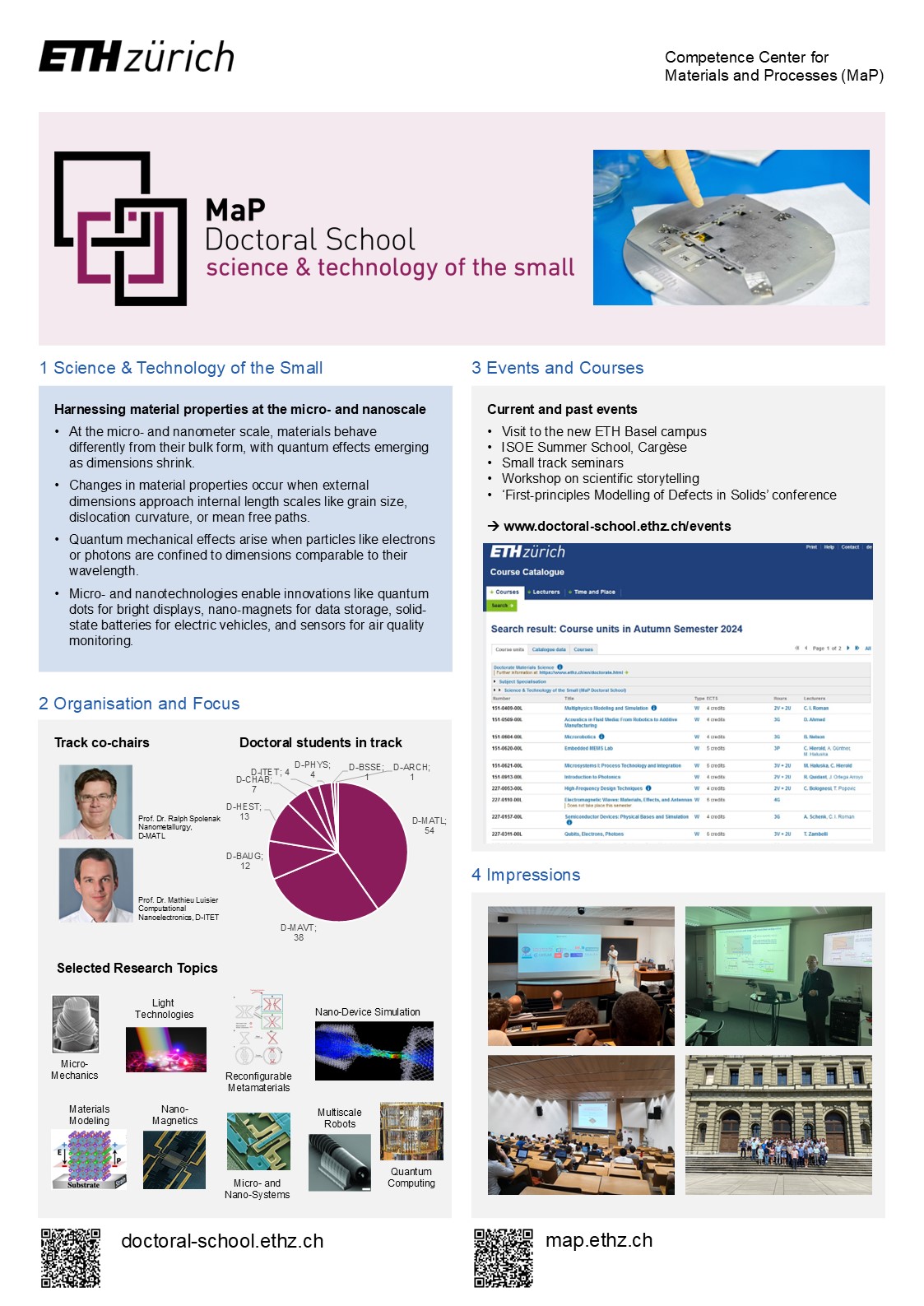Science & Technology of the Small
From materials and fundamentals to engineering devices, systems, and applications

At the micro- and nanometer scale, materials behave very differently than in their bulk-like form where the classical laws of physics apply. Changes in materials properties typically occur when the external dimensions approach an internal length scale, e.g. the curvature of dislocations, grain size, domain size, grain boundary or domain-wall thicknesses, spin waves (magnons) or electron (phonon) mean free paths. Furthermore, when electrons, crystal vibrations (phonons), or light particles (photons) are confined over dimensions comparable to or below their wavelength, quantum mechanical effects start to manifest themselves. Theoretical and experimental investigations can be combined to take advantage of these phenomena, especially the presence of discrete energy states.
Over the years, micro- and nanotechnologies have paved the way for new structures and device types with unique functionalities, e.g.
- colloidal quantum dots as ultra-bright pixels of TV screens,
- nano-magnets to rapidly write and read huge amounts of data,
- amorphous systems for various functionalities in magnetism and catalysis,
- multi-gate transistors at the core of the microprocessors equipping all portable electronic devices,
- solid-state batteries to power future electrical vehicles,
- nanoparticle-based aerogels as 3D photocatalysts,
- ultra-sensitive sensors based on 2D monolayers or carbon nanotubes to monitor the quality of the air we breathe,
- thermoelectric nano-generators capable of recycling waste heat into usable energy,
- or building blocks of future quantum computers.
Find recommended courses (VVZ): Download Instructions (PDF, 89 KB)
Track poster (see below): Download Download (PDF, 1.2 MB)

